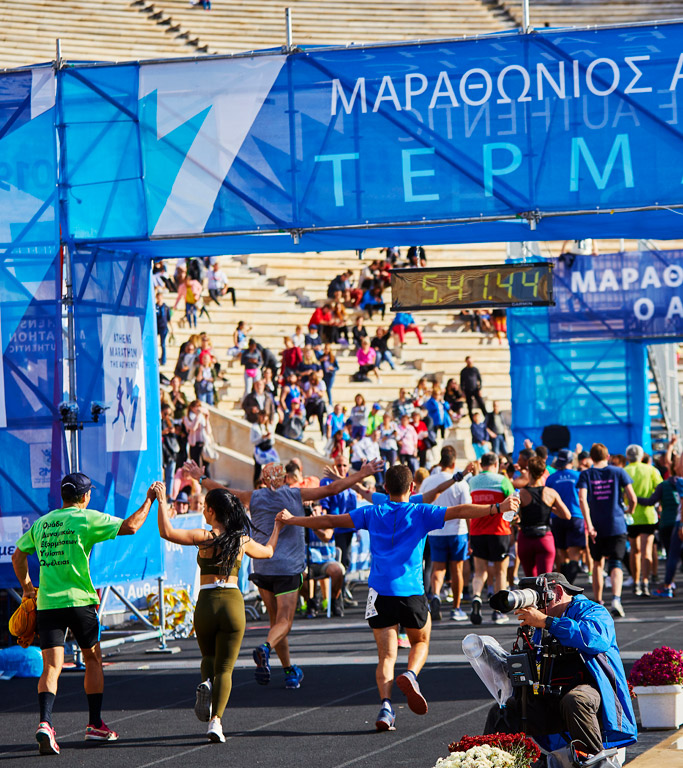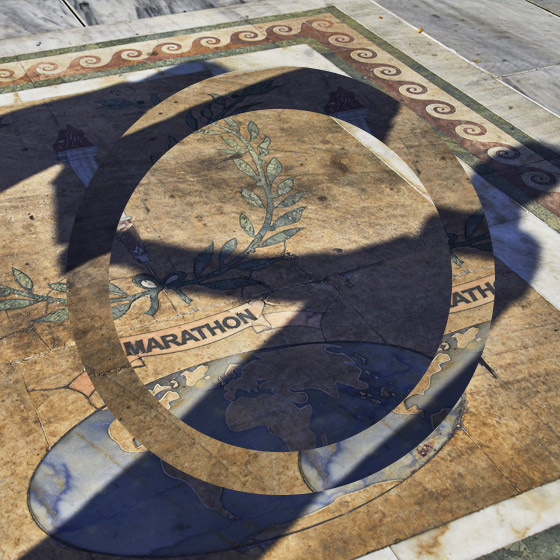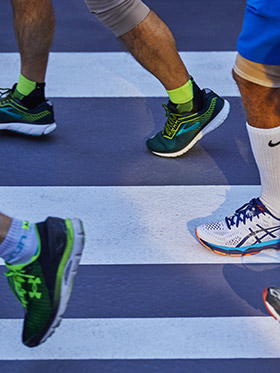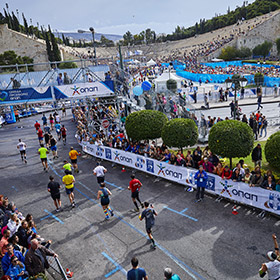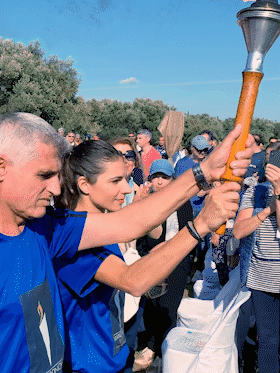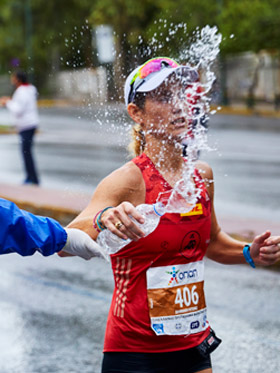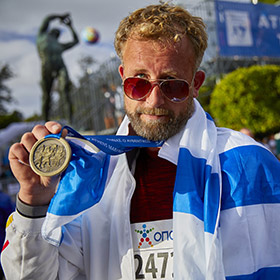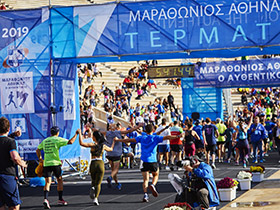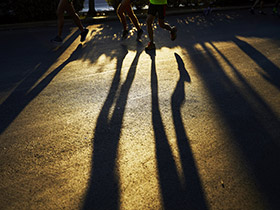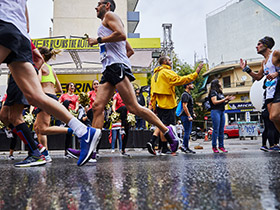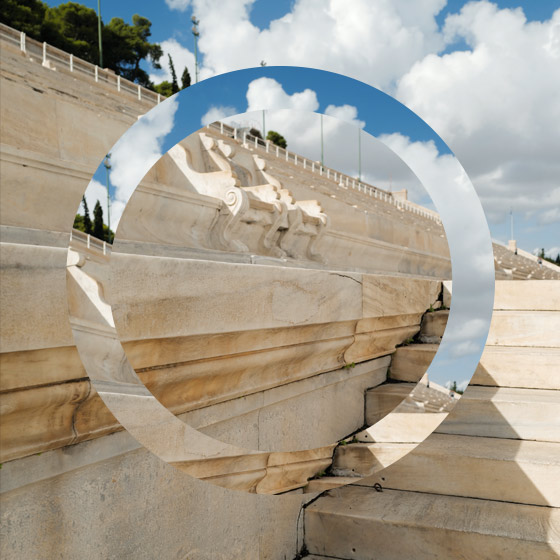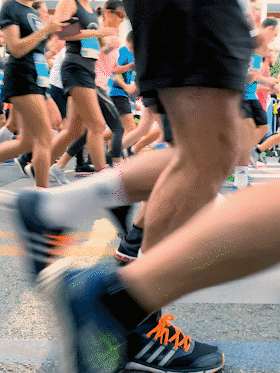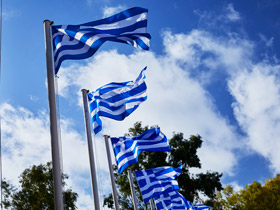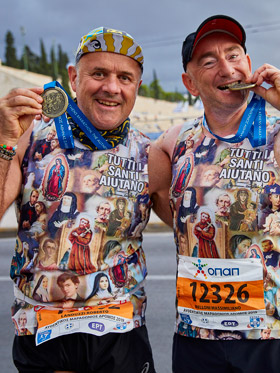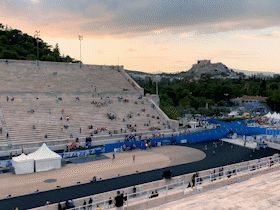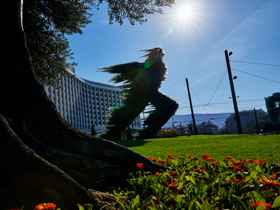In a marathon there may be a winner, but there are certainly no losers. Because in terms of the course, all the runners are equal. In Athens, the international running community meets every year in November in the town of Marathon to overcome the historic 42.195 kilometres to the Panathinaiko Stadium together. 15,000 athletes and sportspeople follow the blue line on the asphalt, whilst thousands of spectators cheer them on. Whether you take eight hours or two: everyone becomes part of the story, with the ancient world connecting to the present.
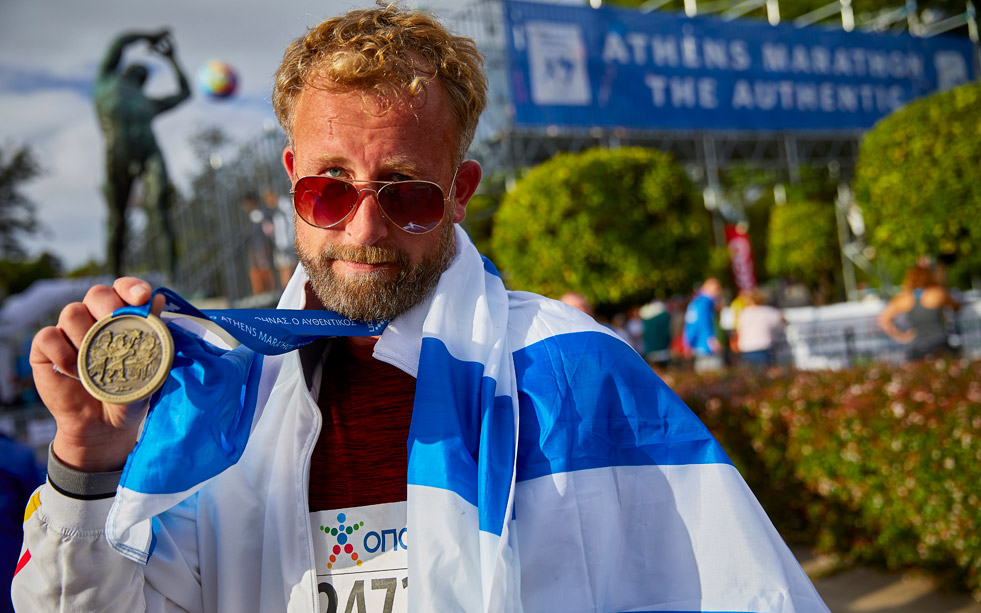
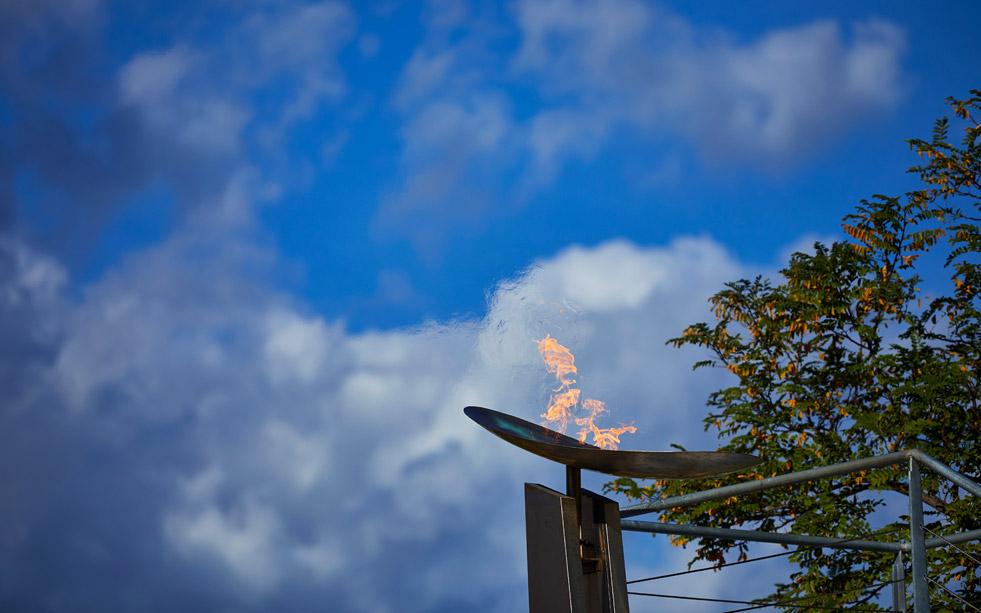
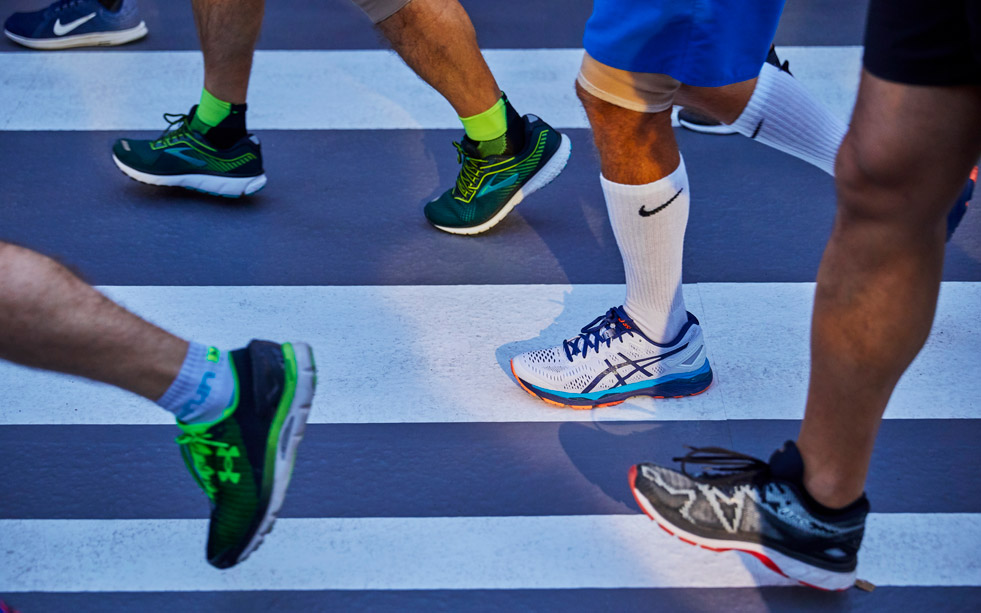





Lines on the ground, stripes on shirts, shorts and shoes. Such a marathon run brings a lot of colour into the city and onto the ground with all the colourful sportswear. Some wear neon-coloured professional running shoes on their feet, others run in leather sandals or barefoot shoes with toe separators, and one gentleman even runs in just his bare feet. The distance from Marathon to Athens is 42 kilometres – 42.195 kilometres to be precise. The course is considered to be the original marathon – insiders see the mother of all marathons as the most difficult challenge. For hobby runners, it is considered to be the ultimate accolade if you conquer the original marathon – and reach the finish line. However, the general feeling is that, like nowhere else, in Athens the idea of having been part of it is the main focus of attention. Running partners, running friends and running groups from Athens and all over the world come together every November at this historic location where, according to legend, the foundation stone for the longest Olympic running discipline was laid 2,500 years ago. Today, the running shoes squeak into the bends on the wet asphalt.
The Athens Authentic Marathon sees itself as an institution that wishes to convey a set of values. That is why freedom and friendship are also celebrated at the opening ceremony in Marathon. The official speakers of SEGAS, the national athletics association, together with the mayors of Athens and Marathon, underline once again that this event is open to everyone: to all ages, all sexes and all skin colours. Since 1982, the Athens Marathon has been considered a "celebration of the human spirit, solidarity and fundamental values, a celebration that conveys the message of a better future at personal, community, national and international level". In front of the holy hill in Marathon, at kilometre four, Greek dancers interpret the tragedy of the messenger runner, Pheidippides, in a performance: according to legend, in 490 BC, after winning the battle, he hurried from Marathon to Athens with the message of the Greek victory over the Persians. Exhausted by the exertions of his run, Pheidippides is said to have collapsed on the Areopagus, a rock to the west of the Acropolis, after bringing the good news. He died there on the spot. Whether truth or just a dramatic, tragic invention of the ancient writers, the myth about the messenger's run still fascinates people to this day. During the first Olympic Games in 1896, the first modern-day marathon race was also held, at that time exclusively among professional athletes. As a "meeting of the youth of the world", the Olympic Games serve to promote sporting comparison and international understanding. In 1982 the Greek Athletics Federation, SEGAS, proclaimed the first Athens Marathon.

